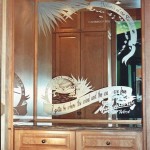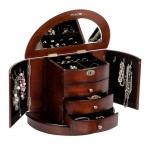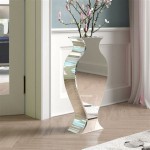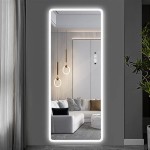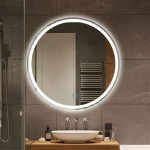How To Make A Mirror Frame At Home: Easy DIY
Creating a custom frame for a mirror is a rewarding project that enhances home decor and adds a personal touch. This guide provides step-by-step instructions for constructing a simple, elegant frame using readily available materials and basic tools. The project is suitable for various skill levels and can be adapted to fit individual aesthetic preferences.
Materials Required:
Several materials are necessary for this project. These include the mirror itself, which should have its dimensions measured accurately. Wood boards are the primary framing material; the type and thickness can be selected based on desired aesthetics and budget. Common choices include pine, oak, and poplar. Wood glue provides a secure bond between frame pieces. Finishing nails, appropriately sized for the wood thickness, are used for reinforcement. Wood filler conceals nail holes and imperfections. Measuring tape and a pencil are essential for accurate marking and cutting. A saw, preferably a miter saw for angled cuts, is required for cutting the wood. Sandpaper, in various grits, smooths the wood surface. Finally, chosen finishes, such as paint or stain, add the desired aesthetic.
Step 1: Measuring and Cutting the Wood
Accurate measurements are crucial for a well-fitting frame. The mirror's length and width determine the wood pieces' dimensions. Add the desired frame width to each side of the mirror's measurements. For example, for a 2-inch frame around a 12x16 inch mirror, the frame pieces would need to be 16x20 inches. Mark these measurements on the wood boards using a pencil and measuring tape. A miter saw is recommended for achieving precise 45-degree angle cuts at each end of the wood pieces. These angled cuts ensure seamless joining at the frame corners.
Step 2: Assembling the Frame
Once all four frame pieces are cut, assembly can begin. Apply wood glue to the mitered edges of two adjoining pieces. Carefully align the pieces to form a right angle, ensuring a tight fit. Secure the joint with finishing nails, driven in at an angle to enhance stability. Repeat this process for the remaining frame pieces until a complete frame is formed. Wipe away any excess glue promptly. Allow the glue to dry completely according to the manufacturer's instructions.
Step 3: Filling and Sanding
After the glue dries, fill any nail holes or imperfections with wood filler. Using a putty knife, apply the filler smoothly and evenly. Allow the filler to dry completely. Once dry, sand the entire frame surface with progressively finer grits of sandpaper. Start with a coarser grit to remove excess filler and smooth any rough patches, then move to finer grits for a polished finish. This step prepares the frame for the final finish application.
Step 4: Applying the Finish
The final stage involves applying the chosen finish. Several options are available, including paint, stain, or a combination of both. If using paint, apply thin, even coats, allowing each coat to dry completely before applying the next. For stain, apply with a brush or cloth, following the manufacturer's instructions regarding drying times. Multiple stain coats may be applied to achieve the desired color depth. A sealant can be applied over the paint or stain to protect the frame and enhance its longevity.
Step 5: Attaching the Mirror
Once the finish is completely dry, the mirror can be attached to the frame. Various methods can be employed for this, including mirror clips, adhesive, or a combination of both. Mirror clips are small metal brackets that grip the mirror edges and are secured to the back of the frame. Adhesive, specifically formulated for mirrors, can be applied to the back of the frame before placing the mirror. It is crucial to ensure the mirror is centered within the frame and securely held in place before the adhesive sets. For added security, both clips and adhesive can be used together.
Step 6: Hanging the Mirror
The final step is to hang the completed mirror. Several hanging methods exist, depending on the frame size and wall type. D-rings or wire can be attached to the back of the frame for hanging on hooks or nails. Alternatively, specialized mirror hangers can be used for heavier mirrors. Ensure the hanging hardware is securely attached and appropriately rated for the weight of the mirror. Carefully hang the mirror on the wall, ensuring it is level and secure.
This process offers a flexible framework for creating a personalized mirror frame. Adaptations, such as adding decorative elements or using different materials, can further enhance the project and align it with individual style preferences. Careful planning and precise execution ensure a successful outcome and a beautiful, custom-framed mirror.

Easy Diy Stick Framed Mirror That Looks Expensive

20 Fantastic Diy Mirror Frame Ideas A Cultivated Nest

30 Diy Mirror Frames Scratch And Stitch

Easy Driftwood Mirror The Wood Grain Cottage

30 Diy Mirror Frames Scratch And Stitch

16 Creative Diy Mirror Frame Ideas Diys To Do

20 Easy Creative Diy Mirror Frame Ideas

20 Easy Creative Diy Mirror Frame Ideas

20 Fantastic Diy Mirror Frame Ideas A Cultivated Nest

Diy Mirror Frame Home Decor Ideas

